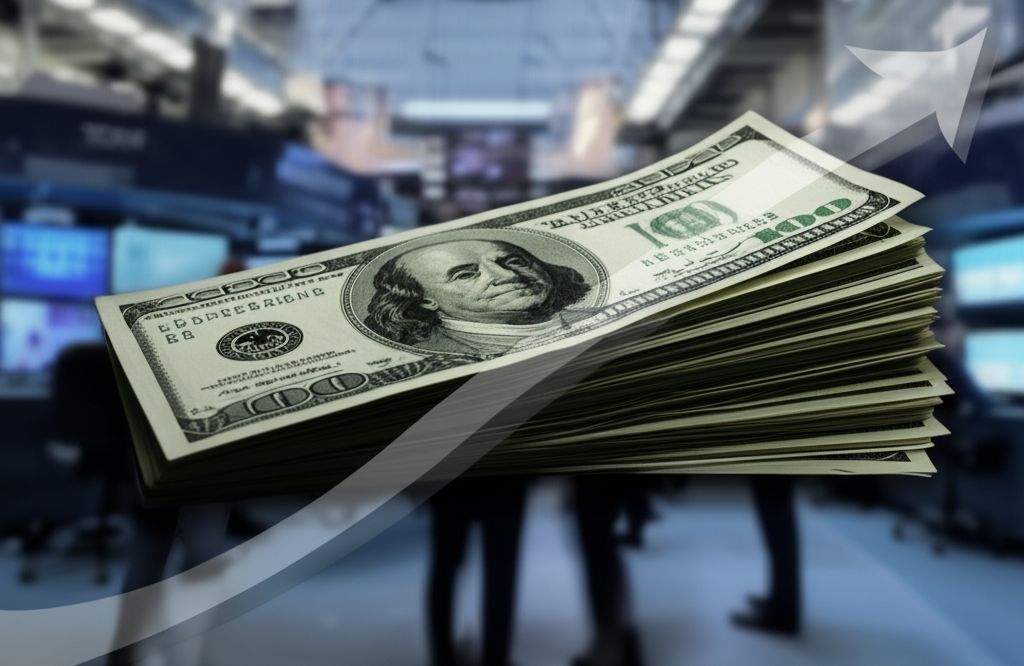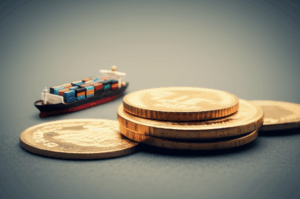US Dollar Benefits Amidst a Muted Risk-On Reaction
The global financial landscape often presents intriguing paradoxes, and one such recent development has caught the attention of market watchers: the US dollar’s surprising strength even as broader market sentiment seemingly leans towards a “risk-on” appetite. Typically, when investors feel more confident about the global economic outlook, they tend to shed lower-yielding safe-haven assets like the dollar in favour of riskier, higher-return investments such as equities, commodities, or emerging market currencies. However, the current scenario paints a different picture, with the greenback holding firm or even appreciating despite signals that might otherwise suggest a weakening. This ‘muted risk-on’ reaction, as analysts term it, indicates a deeper complexity at play, reflecting underlying investor caution despite superficial optimism.
Recent weeks have seen a smattering of developments that, in isolation, might traditionally trigger a robust risk-on rally. We’ve observed some positive economic data points, hints of easing inflationary pressures in certain sectors, and even renewed optimism regarding global growth trajectories in some regions. For instance, resilient US labour market data or an uptick in manufacturing sentiment abroad could inspire a sense of global recovery. Yet, instead of a dramatic capital flight from the US dollar, we’re witnessing a remarkably stable, if not strengthening, performance from the world’s reserve currency. This resilience suggests that while some green shoots of recovery or stability are appearing, the market’s underlying confidence remains tentative.
Several factors contribute to this counter-intuitive dollar dynamic. Firstly, despite positive headline figures, a persistent undercurrent of economic uncertainty continues to temper outright bullish sentiment. Geopolitical tensions, lingering concerns about the stickiness of inflation, and the ongoing debate surrounding the trajectory of interest rates by major central banks worldwide, including the Federal Reserve, weigh heavily on investor minds. The Fed’s sustained commitment to a “higher for longer” interest rate policy, for instance, continues to make US Treasury yields exceptionally attractive relative to those offered by other developed economies. This yield differential acts as a powerful magnet, drawing global capital into dollar-denominated assets and consequently bolstering the currency’s value. Even if general risk appetite improves marginally, the allure of superior, relatively secure returns in the US market keeps the dollar in demand.
Secondly, the “muted” aspect of the risk-on reaction is crucial. It implies that while some good news is emerging, investors are scrutinizing it for sustainability. They are wary of overextending into riskier assets if the foundations for a prolonged global recovery are not yet firmly established. In such an environment, the US dollar’s role as the quintessential safe haven remains paramount. During periods of subtle economic fragility or unexpected market volatility, the dollar often benefits from a flight to quality. Investors might perceive minor improvements in global sentiment as merely a temporary reprieve rather than a definitive turning point, thus maintaining their exposure to the dollar as a defensive hedge. This inherent demand for safety, coupled with its unparalleled liquidity and stability, makes the dollar an appealing choice even when other currencies might be expected to gain ground.
Furthermore, a significant part of the dollar’s current strength can be attributed to the relative economic performance and policy divergence among major global economies. While the US economy has shown remarkable resilience in certain sectors, other major economies might be grappling with more pronounced slowdowns or less favourable policy outlooks. For instance, if the Eurozone or China face more significant growth headwinds or their central banks are perceived as less hawkish, their respective currencies could weaken against the dollar by comparison. This relative strength dynamic means the dollar can appreciate not just due to its own merits, but also due to the comparative weaknesses elsewhere, creating a scenario where it benefits even amidst a general uptick in global risk appetite that isn’t equally distributed across regions.
The US dollar’s robust performance amidst a seemingly risk-on environment underscores the complex interplay of global economic forces, central bank policies, and investor psychology. It signals that while pockets of optimism may be emerging, the broader market remains cautiously optimistic, prioritizing stability and attractive yields over aggressive risk-taking. For young investors navigating these waters, understanding this dynamic is key: the dollar isn’t merely a beneficiary of outright fear but can also thrive when global confidence is uneven or when its underlying economic fundamentals and interest rate differentials offer a compelling alternative. As long as significant uncertainties persist and the Federal Reserve maintains its relatively hawkish stance, the dollar’s role as a resilient safe haven and a yield-attracting asset is likely to endure, continuing to defy simplistic market interpretations and highlighting the sophisticated nature of currency movements in the modern global economy.





